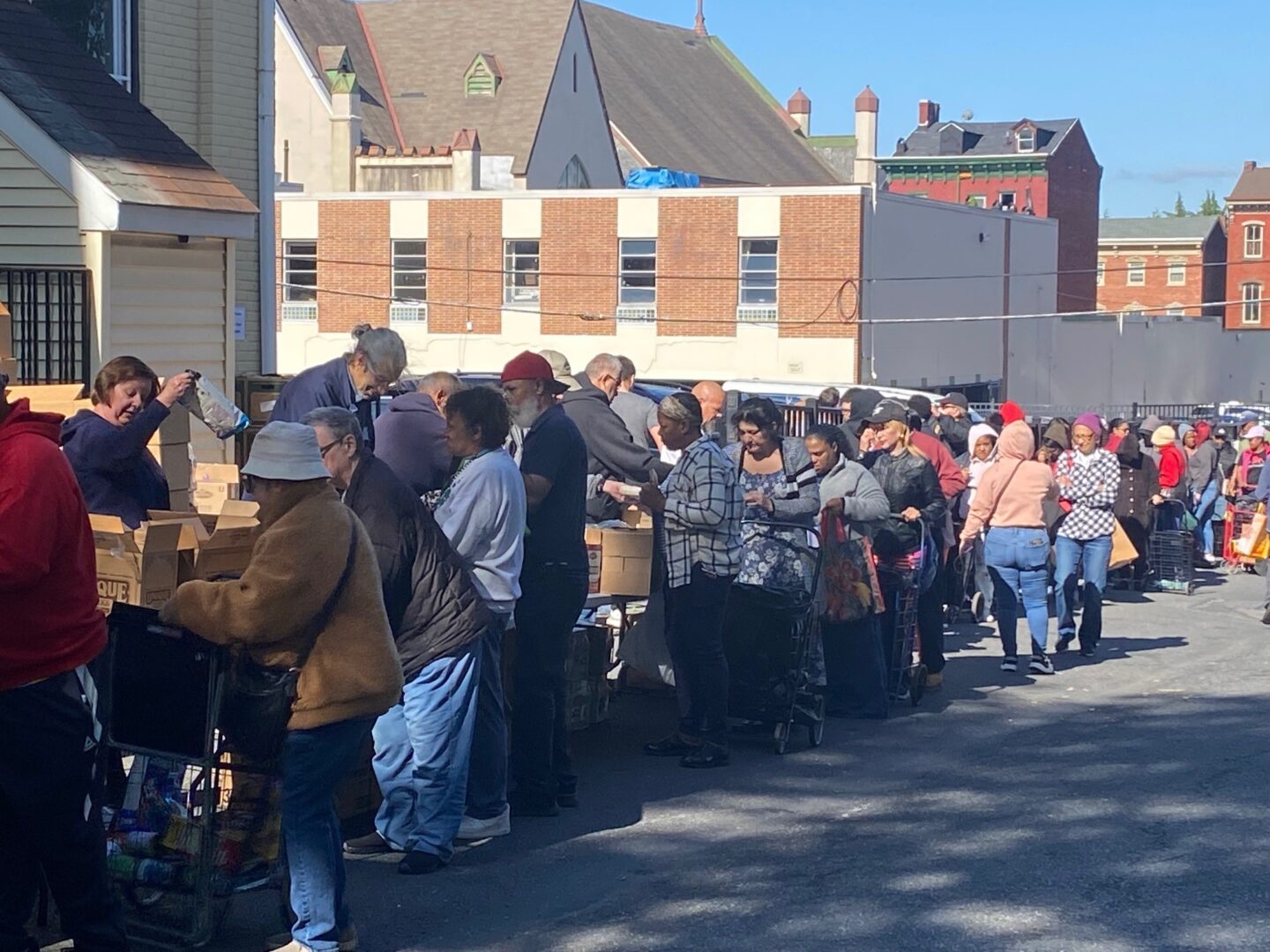
United Way of Berks County works with agency and community partners like New Journey Community Outreach to help fight hunger in Berks. A weekly food distribution takes place at NJCO in May 2023.
United Way of Berks County

United Way of Berks County works with agency and community partners like New Journey Community Outreach to help fight hunger in Berks. A weekly food distribution takes place at NJCO in May 2023.
United Way of Berks County

United Way of Berks County
United Way of Berks County works with agency and community partners like New Journey Community Outreach to help fight hunger in Berks. A weekly food distribution takes place at NJCO in May 2023.
With inflation and the high cost of gas and groceries, many households have had to adjust their budgets and limit unnecessary expenses. A recent report from United Way Pennsylvania shows the impact is perhaps most severe on those already teetering on the edge of poverty.
The report aims to show the silent struggles people face in times of financial distress by measuring the number of households that are asset limited, income constrained, and employed, or “ALICE.” The report identifies ALICE households by calculating a family’s “survival budget,” which depends on the cost of necessities such as housing, child care, food, health care, transportation, technology and taxes of each county. It then compares the cost of those things to the family’s income.
“We’re talking about families who are employed, and they make enough money that puts them above the federal poverty level, but they don’t make enough money to afford the basic essentials,” said Tammy White, president of United Way of Berks County.
The report found that the number of financially struggling households–those below the federal poverty line and ALICE– increased 7% from 2019 and 2021 in Pennsylvania.
One of the key takeaways of the report is that Black and Hispanic communities in Pennsylvania, including those in the most populous central Pennsylvania counties, have higher percentages of poverty and ALICE households in comparison to white households.
Kristen Rotz, president of the United Way of Pennsylvania, said the reasons behind those inequities have existed for a long time, but were exacerbated by the pandemic.
“Some of it is obviously long term institutional and policy-related issues in our country, which has led to inequitable wealth outcomes for certain populations. Some of this is a reflection of multi-generational poverty that exists for a variety of reasons,” Rotz said.
Berks County is a stark example of how wealth outcomes tend to vary disproportionately by racial and ethnic groups.
About 40% of households in Berks County are poor or struggle to afford a basic survival budget. According to the United Way’s analysis, 62% of Latino and 52% of Black households in Berks County fall below the ALICE threshold. A large concentration of that population lives in Reading, where 66.5% of the population is Latino, 43% is White and 12.6% is Black, according to 2022 Census data.
Most White households in Berks County – 64% – are above ALICE. About 36% are unable to afford a survival budget, according to United Way’s report.
The report also found that single-parent households tend to have more difficulties affording basic household expenses such as rent, utilities, food and transportation.
Mike Toledo, president and CEO of Centro Hispano Daniel Torres in Reading, said the report’s findings confirm what Centro’s staff has been hearing from the clients they serve. Toledo said the report “paints a picture” of what families are dealing with after the end of pandemic assistance. The end of those protections, which included increased SNAP benefits and rental assistance, combined with inflation have left families scrambling for enough money to afford the bare minimum to survive.
In Reading, the rising cost of rents is one of the reasons more families are seeking help at Centro, Toledo said.
“A majority of the families that we’re talking about either become stagnant and just not keep up with the cost of inflation,” Toledo said. “Home rents went up incredibly high, higher than normal in our market here in Reading.”
Rent.com reports a 7% annual increase in the monthly cost of a two-bedroom apartment in Reading, bringing the current average to $1,650.
Higher food costs and transportation costs are also difficult to afford for many families, said Ashley Chambers, senior vice president of community impact for the United Way of Berks County
“We hear from our local food bank often that they’re seeing a demand higher than during the pandemic,” Chambers said. “Families who may not have needed food assistance are reaching out to the food bank, because they can’t fit that increase into their budget.”
For Reading’s majority Latino community, language barriers can also be a factor for economic stagnancy. Some people might be limited to low-wage jobs that do not require English, and that might make it harder to scrape by, Chambers said.
That is why United Way Berks has been focusing on education, whether it’s English-language classes through its program that offers free ESL classes to Tower Health employees, or building literacy skills in K-12 school through Read Alliance, a program that pairs Reading High School student reading tutors with first graders.
The trend of income disparity by race and ethnicity is apparent in other central PA counties, the report shows. In Dauphin County, roughly half of Hispanic households are in poverty or struggle to afford basic expenses with their salary. In Franklin County, the majority of Hispanic and Black families are also in the ALICE category or living at or below federal poverty level.

Get insights into WITF’s newsroom and an invitation to join in the pursuit of trustworthy journalism.
The days of journalism’s one-way street of simply producing stories for the public have long been over. Now, it’s time to find better ways to interact with you and ensure we meet your high standards of what a credible media organization should be.